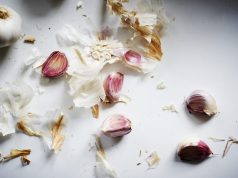By Francesca Sullivan
If you are fortunate enough to have a garden, this is the time of year you’re likely to be using it the most. But are you getting the best out of your outdoor space? According to Khaled Shokry of Palm Gardens, one of three garden landscape artists contributing to this special feature on garden design, the past decade has seen a re-birth in the field, with more and more Egyptians moving outdoors to enjoy their leisure time. Here’s a taste of what Shokry, Yehia Sherbiny (Genenti), and Ismail Niazi (Land Designers) have to offer, along with answers to some common questions.
CWM: What services do you offer?
YS: At Genenti we offer a complete soft-scaping service depending on the specific needs of each project and client. Whether you’re designing your garden or commercial space from scratch, or are looking to renew and add some exotic plants to your landscape, we offer design consultancy, plant distribution, irrigation and lighting systems, and follow up with the execution of the work to the highest standards.
IN: We offer full landscape architectural design services covering conceptual design up to construction drawings and specifications. This can include hard and soft-scaping, decking and paving, water features, lighting and irrigation systems, as well as horticulture.
KS: We provide a full range of services from full design to turnkey, plus everything in between including architecture, lighting, implementation, plantation and also ongoing maintenance. We’ve had some of our clients for over ten years, while others pay for a one-off session with drawings, concepts and ideas, but then can’t necessarily afford to get us to do the work, so they may contract that later from a cheaper source.
What materials do you most commonly use?
YS: We mostly provide horticultural material, ranging from exotic palms, trees and colourful ground covers, a wide variety of which are produced and supplied by our two nurseries.
IN: Many different materials. Our designs combine elements such as stone, water, planting and lighting to create mood. This can vary greatly since the materials of the original building, light levels, views and client tastes all contribute to the end product. Just as a painting can change considerably based on where you place it. Paint can be attractive to certain people but not others, this is a matter of personal taste.
KS: My job as a landscaper is to fulfil the requirements of clients whilst at the same time respecting the architecture of the place. For example the outside should be a continuation of the inside to achieve a harmonious feeling as you walk through. At the same time I pride myself on utilizing the latest innovations in materials, for example I am currently encouraging clients to use high-end porcelain as flooring. There’s been a revolution in this material with a great choice of finishings, colors and patterns. It’s stronger than marble and doesn’t stain. In Egypt we have a high level of salinity and sodium in the water, which causes discolouration especially in natural materials – but not on porcelain.
What new lighting and hydrating technology is available in Egypt?
YS: A continuous and controlled water source is an integral part in any soft-scape work. The infrastructure settings of irrigation systems have not gone through much development in recent years. However the new battery and solar energy operated irrigation system control units now available help combat the continuous cuts in power supply to residential and commercial units. Our designs take into consideration the amount of light distribution and we generally recommend using LED lighting to reduce electricity consumption.
IN: LED lighting is increasingly changing how people design the landscape because of the reduction of electrical consumption and ongoing cost. Irrigation moisture sensors are contributing to a reduced use of water and thus preserving this increasingly scarce resource.
KS: More than four years ago I switched to using only LED lighting in my designs. It reduces electricity bills by around eighty per cent, allows a much more architectural feel to the light, with a stronger range and easy control of angles and colors. Old style lighting units can sometimes heat up so much they burn the trees or vegetation; LED is safer. In terms of hydration there hasn’t been much change over the past two decades. There are innovative new techniques such as under-lining the garden so it collects and recycles water, but they are too costly for most clients.
What needs to be taken into account when working with the climate and environment in Egypt?
YS: While climate dictates the range of horticultural elements, which can be used in particular areas across the country, it’s not the only factor. Soil composition, water and nutrient needs also differ depending on each plant. To understand this properly you have to study each species’ original habitat and how far it can adjust to the local environment. Other factors include how the area itself is being used, for example is it for a public or residential area, and what are the hard-scape elements; swimming pools, buildings and so on. Each client and site has individual requirements.
NI: Saving on water consumption is an increasingly important issue for environmental preservation but also for the running cost of a garden. People in similar climates throughout the world have already adopted drought tolerant planting to reduce water requirements on a daily basis. Egypt is slowly moving in this direction but mostly with large-scale projects such as hotels and shopping malls.
KS: One new innovation in garden design is the development of really good-looking artificial grass. It’s initially expensive and some people may hate the idea, but to be really eco-friendly and lower water consumption you should consider using low maintenance materials like sand and artificial grass – that’s what I’ve done in my own place.
Which plants do you find most suitable, and which ones have to be used with care?
IN: Egypt is blessed with abundant sunshine and, in the past, an abundance of cheap water. In the past many gardens contained mostly tropical varieties because clients wanted a lush garden. Environmentally however, it is more suitable to use more drought tolerant varieties native to the Mediterranean region, or even go more of the way of a desert style garden. This does not necessarily mean that you will have a less lush looking garden though.
KS: Palms remain the best plants to use in sub-tropical climates. They’re easy to maintain, only require a medium amount of water, and have a non-aggressive root system. (The exception to this is the date palm, which has an extensive root system and will suck up copious amounts of water if it can). But there are many other varieties to choose from. Do your own research when buying plants from nurseries, and don’t necessarily believe what they tell you. Their main objective is to sell!
What special elements like water features and rockeries can you include in your designs?
NI: As a design firm we can provide endless possibilities, and have created most things, including water features, rock gardens, roof gardens and many other elements.
YS: Our focus is on the horticulture, irrigation systems, potted plants and their maintenance, and how clients can make the best out of the intended area. But we also provide consultancy services for integrating other elements such as rockeries, lighting, water features and gazebos.
KS: We do everything, and are well aware that at the high end of the market our clients travel, look in magazines, check out hotel gardens abroad, and often come back with photographs of things they’ve seen and like. There are new trends, and Egypt has seen a re-birth of landscaping over the last ten to fifteen years. Now that so many people are moving out to areas such as Sixth of October, they are increasingly looking to take advantage of this to live in their outdoor spaces – in the same way as they would in their summer homes on the coast.
What are the common problems people encounter when maintaining their gardens?
IN: You must look ahead to the future and make sure the maintenance company is going to successfully maintain the irrigation system, has the required knowledge in regard to pruning, fertilizes the garden regularly, and keeps things clean and orderly. An additional service we provide is to represent our clients when arranging and negotiating maintenance contracts.
KS: The real problem is that there is no formal education for gardeners in Egypt. In fact we don’t have gardeners at all – just workers who pose as gardeners! There is also a degree of inflexibility and lack of understanding from property owners that a garden is always a work in progress. It used to be that workers would prune and cut back the trees each spring as a matter of course. Nowadays with people living full-time in their villas they object to the look of pruned plants so the trees end up eating each other; the shade from one affects others that are trying to grow, and so on. Another problem is that people don’t do their research. They buy a couple of small plants that look attractive without finding out how big they’re likely to grow, and where not to put them so their roots won’t cause havoc. Buying plants is only the beginning of your outlay; they will need not just water but food, medicine and on-going maintenance. The truth is, gardening is an art!
[email protected] – www.genenti.com – www.palmgardensegypt.com






Comments are closed.